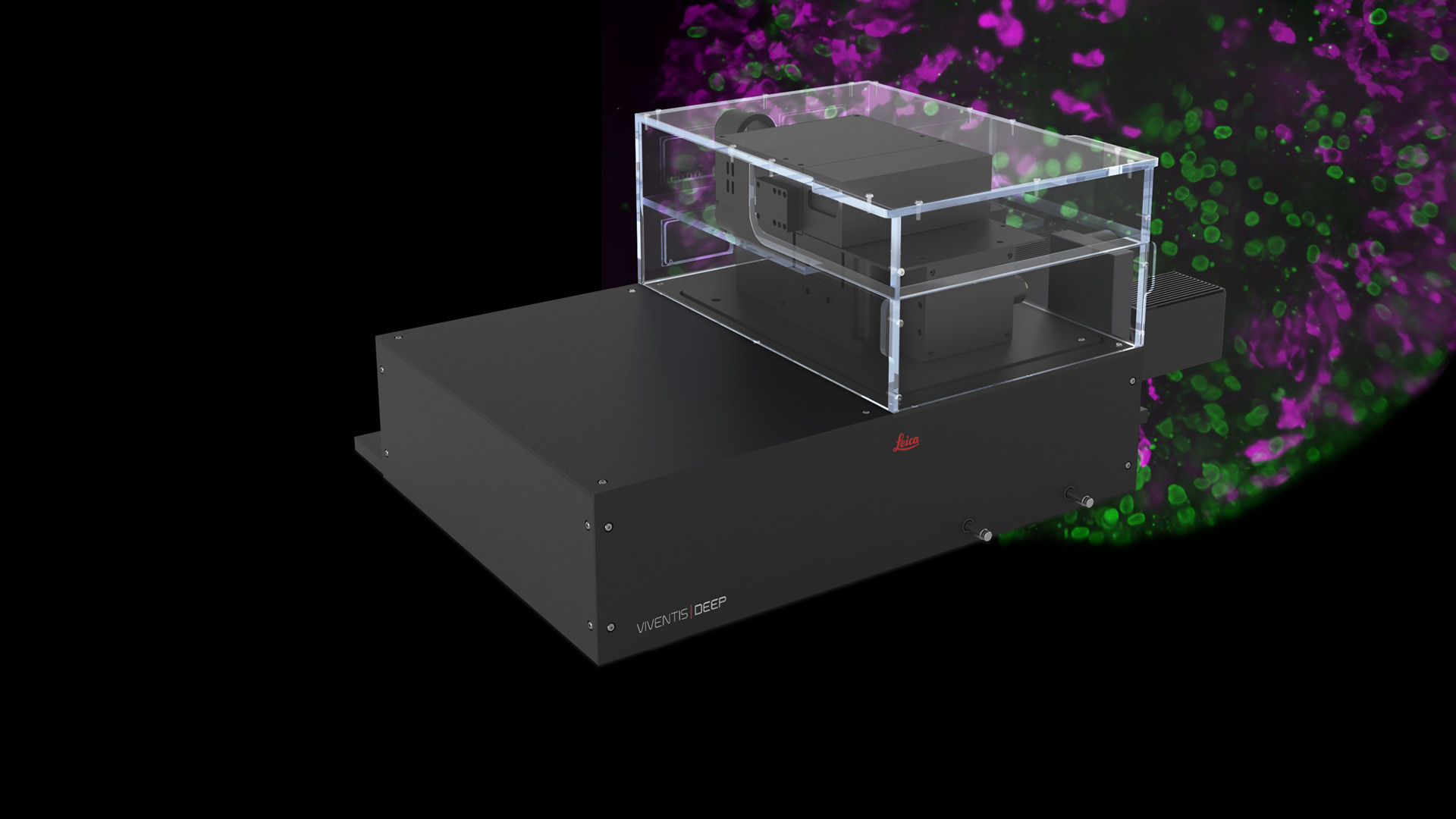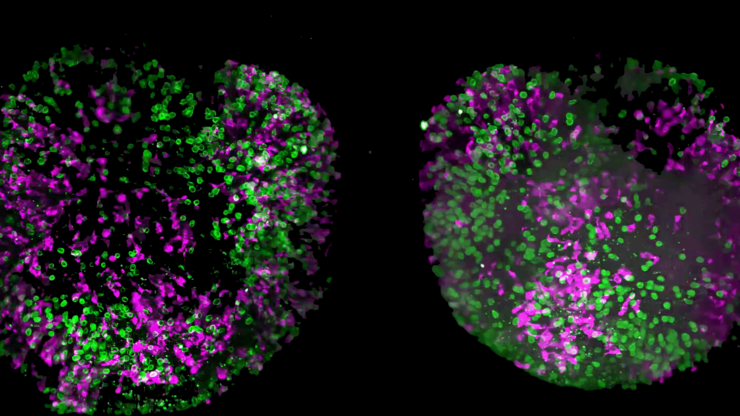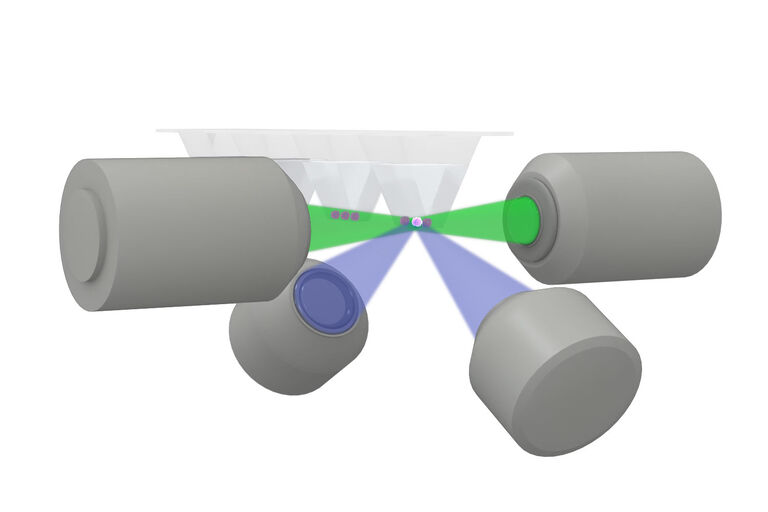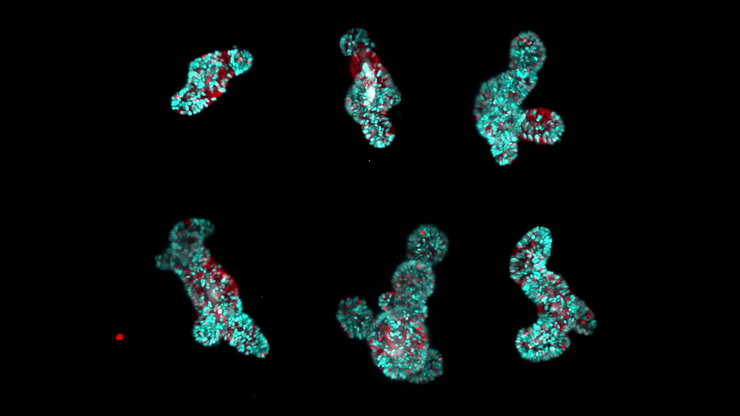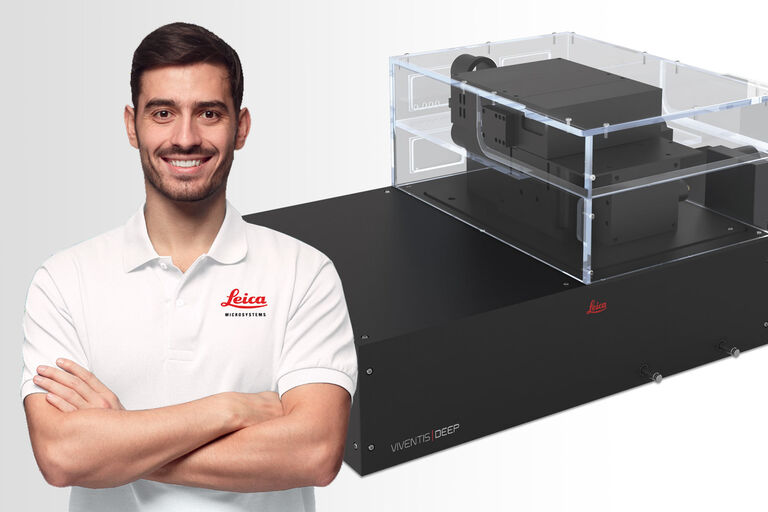Viventis Deep Dual View Light Sheet Fluorescence Microscope
The Viventis Deep light sheet fluorescence microscope combines multi-view and multi-position light-sheet imaging to illuminate life in its entirety.
Begin your journey to discover deep, long-term imaging that reveals the intricate details and dynamics of biological systems.
Explore life in depth
The Viventis Deep microscope helps you to expand the spatio-temporal understanding of your sample to its full depth, thanks to increased spatio-temporal resolution.
Achieve detailed volumetric imaging for a complete view of the sample with a patented combination of
- Dual illumination
- Dual view detection
- Multi-position
- Open top sample holder
You can even image large light scattering samples over time with outstanding quality for meaningful downstream analysis, while minimizing light dose and maintaining sample accessibility.
Explore multiple living samples in parallel
Get more data from a single experiment. Collect data from multiple samples in parallel under different conditions in a single timelapse. The open-top configuration of the Viventis Deep microscope transforms your light sheet imaging with higher throughput and multi-position capabilities.
It enables
- Easy sample mounting
- Imaging under physiological conditions with only minor protocol changes
- Media exchange, even during a running time-lapse
Explore life events with long-term imaging
In a variety of model systems, including intestine, liver and human colon cancer organoids and zebrafish embryos, the gentle light sheet technology of the Viventis Deep microscope provides high image quality while preserving sample viability.
In addition, the advanced incubation solution and easy media exchange even during a running experiment preserves physiological conditions. Easily handle even more complex experimental conditions. To study responses and to ensure specific results, you can add drugs and use an optional photomanipulation arm during a running time-lapse.
Shape the light sheet technology to fit your needs
The Viventis Deep microscope helps you to tune the thickness of the scanned Gaussian beam (DLSM). You can tailor the light sheet with a focus on resolution or field of view.
Its flexible software allows you to change settings while the timelapse is running. In addition, a Python application programming interface (API) lets you code and plug in custom macros for your own experimental ideas.
To prevent your sample from moving out of the field of view (FOV) during time-lapse, intelligent online object tracking changes the stage coordinates.
Enabling your success with complete workflow support
Keep your operations running around the globe with best-in-class services entirely dedicated to microscopy and over 175 years of history.
Key features
- Leica Team: 500+ Service & Application experts
- Leica Training: 4-level factory certification program
- Leica Logistics: 5 regional hubs for genuine parts
- Leica OneCall: PhD-level hotline assistance
